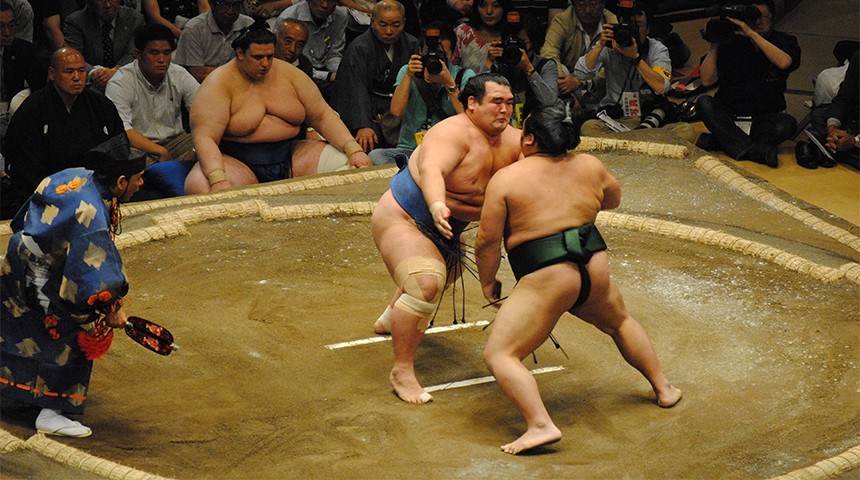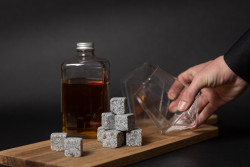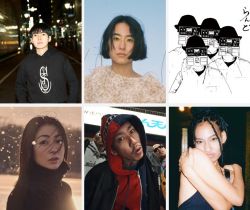
April 21, 2025
Tokyo Sumo Tournament 2025: See Hoshoryu Compete at Ryogoku Kokugikan
Sumo returns to Tokyo from May 11–25, 2025, with newly promoted yokozuna Hoshoryu headlining the tournament
A New Era for the Tokyo Sumo Tournament 2025
Sumo returns to Tokyo’s Ryogoku Kokugikan from May 11–25, 2025, marking a significant moment in the sport’s history. Hoshoryu, recently promoted as the 74th yokozuna, will make his Tokyo debut at the top rank, bringing renewed excitement to the tournament. His ascent comes after years of Mongolian dominance, and his presence on the dohyo signals a generational shift in professional sumo.
Understanding Sumo: Rules and Rituals
Sumo matches are straightforward: the first wrestler to touch the ground with any body part other than the soles of the feet or step outside the ring loses. Despite the simplicity, bouts are intense, often lasting only seconds. Matches showcase raw strength, strategy and centuries-old rituals, including the dramatic salt tosses and stomping ceremonies performed before each bout. Wrestlers don ceremonial kesho-mawashi aprons and perform their shiko foot-stomping rituals to purify the ring and frighten away evil spirits.
Read our essential sumo wrestling vocabulary guide.
The Significance of the Yokozuna Rank
Achieving the rank of yokozuna is the highest honor in sumo. It requires consistent elite performance, often including two consecutive tournament wins. The title comes with enormous expectations: a yokozuna must perform with dignity, uphold tradition, and retire voluntarily if their performance falters. The promotion process is overseen by the Yokozuna Deliberation Council and is as much about character and decorum as it is about wins.
Spotlight on Hoshoryu: The New Yokozuna
Hoshoryu, nephew of former yokozuna Asashoryu, has quickly risen through the ranks, earning his promotion in January 2025 after a dominant performance in the New Year tournament. Known for his agility, fighting spirit and emotional presence on the dohyo, Hoshoryu brings a dynamic energy to the top division. His promotion has rekindled public excitement and brought new attention to the sport both in Japan and internationally.
Other Contenders to Watch
Onosato
Onosato, one of the most consistent performers in recent tournaments, clinched his third championship in March 2025. He’s being closely watched as a potential future yokozuna and is known for his calm demeanor and technical precision.
Kotozakura II
Grandson of the legendary yokozuna Kotozakura, this wrestler made headlines with a strong performance in the November 2024 basho. His traditional technique and disciplined style make him a fan favorite among purists.
Aonishiki
Aonishiki, a Ukrainian-born wrestler who recently debuted in the top division, is quickly rising in the rankings. With ambitions to become the first European yokozuna, his story has captivated fans worldwide and brought new international visibility to sumo.
Experiencing Sumo Beyond the Matches
A day at Ryogoku Kokugikan is a deep dive into Japanese culture. From the moment you arrive, the atmosphere is steeped in tradition—the rhythmic clapping of the gyoji referee, the scent of binzuke hair oil, and the sight of wrestlers in yukata entering the arena. Between bouts, visit the Sumo Museum located within the venue to view historic memorabilia, from championship belts to ukiyo-e prints of famous bouts.
You can also sample a bowl of chanko nabe for just ¥300 in the basement dining area between 12 pm and 2 pm, or shop for souvenirs ranging from wrestler-themed rice crackers to champion handprint calligraphy.
Sumo Dining in Ryogoku
Ryogoku is known for its sumo-themed restaurants, many operated by retired wrestlers:
- Chanko Kirishima: Managed by former ozeki Kirishima Kazuhiro, the restaurant is popular on tournament days. It’s located just down the road from Ryogoku Station.
- Chanko Kawasaki: A true institution with more than 80 years of history, this is among the most authentic places in Tokyo to enjoy sumo cuisine.
Outside, bronze statues and handprints of sumo legends line the street leading to the venue, culminating at the nearby Eko-in Temple, home to the historic Sumo Stone of Strength erected in 1936.
Planning Your Visit
- Dates: May 11–25, 2025
- Venue: Ryogoku Kokugikan, Tokyo
- Tickets: Available from April 5, 2025, via Ticket Oosumo
- Hours: Gates open at 8 am; top division matches begin around 3:30 pm
For more information, visit the Japan Sumo Association.
If tickets on the official website are sold out or you’re looking to enhance your experience, Klook offers guided tours with added perks. Booking through Klook includes your ticket, a smoother entry process, and an interpreter who will guide you through the game.
- Tokyo Sumo Tournament Tour with Tickets with Chair Seat
- Tokyo Sumo Wrestling Tournament Tour
- Tokyo Grand Sumo Tournament Experience with Local Sumo Expert
Already missed the tournament? No problem! Check out a sumo practice experience:
Read more about Sumo in Japan







